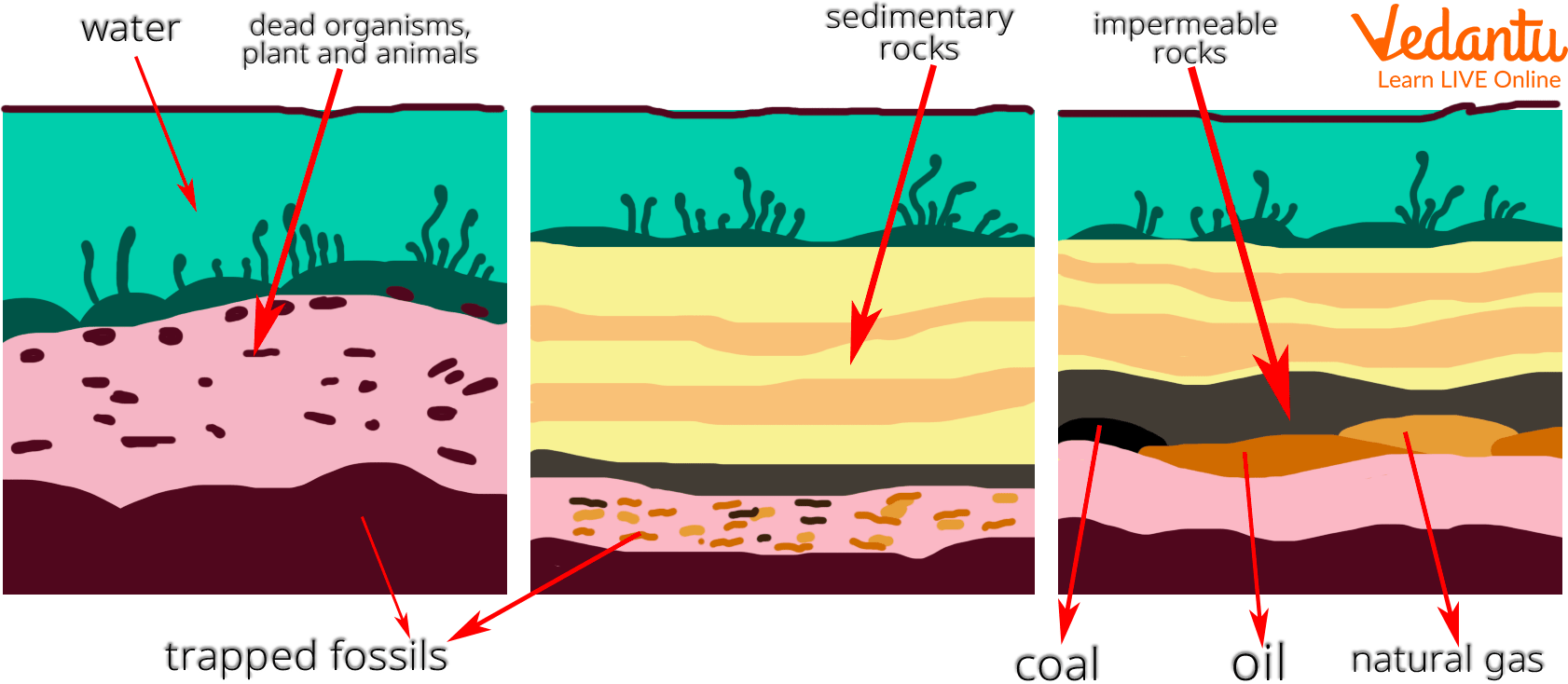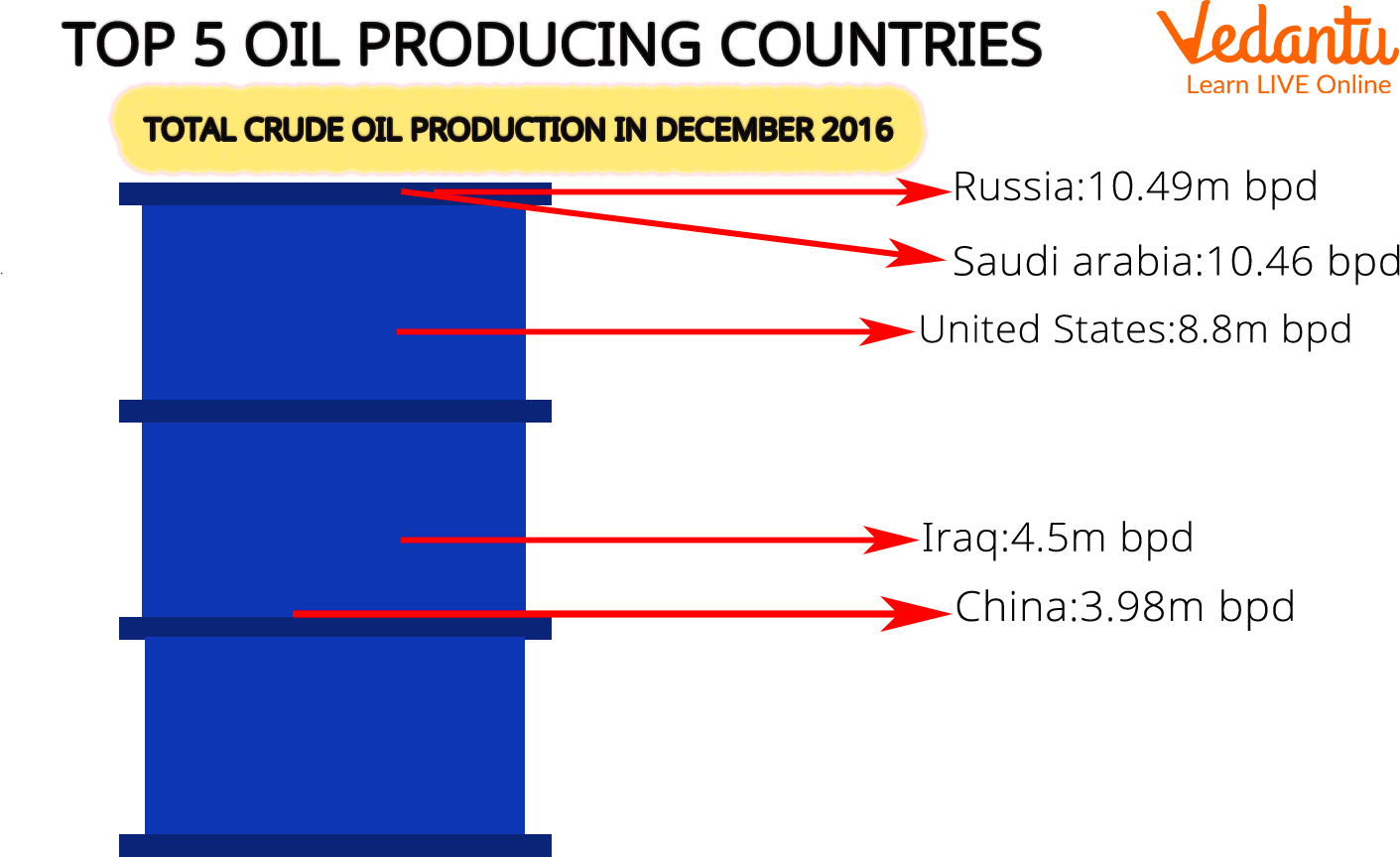




Introduction to Petroleum
We all see various kinds of vehicles moving from one place to another but have you ever thought about how all these vehicles move? We travel with the help of buses and cars but what makes the vehicle move as we need food to run our lives? So what makes the different modes of transportation move? The answer to all such questions is petroleum.

Vehicles Moving on the Road
Petroleum is one of the most widely used commodities in the world and petroleum for kids is an essential topic to teach the importance of petroleum in our life. So let us study it in detail.
What is Petroleum?
Petroleum, which is also called crude oil, is a fossil fuel that is a naturally occurring yellowish-black liquid mixture that is mainly made of hydrocarbons. Petroleum is also popular as “Black Gold.” It occurs in rock formations naturally.
How is Petroleum Formed?
Petroleum is a fossil fuel that is formed from the remains of dead animals and plants.
When the animals and plants die, they sink down and settle on the sea bed of the oceans.
Millions of years ago, the dead vegetation and wildlife got decomposed and then got mixed with the silt and sand.
Then certain bacteria helped in decomposing this organic matter with which some chemical changes were caused.
The matter consisting of hugely hydrogen and carbon was left behind. Because there is no adequate oxygen at the sea bottom, all the matter could not completely decompose.
The matter that was partially decomposed settled on the sea bed and was covered eventually with multiple layers of silt and sand.
This burying process took a million years and then due to high pressure and temperature, the remaining organic matter got completely decomposed and oil was formed.

Petroleum Formation
Sources of Petroleum
Petroleum is mainly found in the underground reservoirs where the ancient seas were located. The petroleum reservoirs are mainly found beneath the seafloor and the land. From there, the crude oil is extracted with the help of big drilling machines.

Top 5 Oil-Producing Countries
Advantages and Disadvantages of Petroleum
Advantages of Petroleum
Petroleum is a fossil fuel that is easy to extract. The technologies that are being used for extracting petroleum are well developed.
It is a very important element for the industries. It is widely used in the industrial sector of the economy.
Petroleum can be used to power up nearly all types of vehicles.
Petroleum has a higher density, on average, one kg of petroleum burnt can help in generating 10,000 kilocalories. Thus, it can help in generating a substantial amount of energy.
Petroleum has very broader areas for application. It is used to power all types of machines including heavy machines, power generators, etc.
Petroleum can be easily transported.
Disadvantages of Petroleum
Petroleum is a form of energy that is non-renewable.
Petroleum emits certain carbon elements which are toxic to the environment.
Petroleum produces certain hazardous substances and toxic materials such as plastic and carbon monoxide.
Petroleum is a fossil fuel, the extraction of which can be harmful to the environment.
The transportation of petroleum can cause oil spills.
Petroleum is a limited resource.
Summary
Petroleum is a natural fuel that has a lot of significance in the global context. It is a nonrenewable form of energy, the formation of which takes a million years. It has various advantages as well as disadvantages. But still, its significance cannot be ignored.
FAQs on How is Petroleum Formed?
1. What is the difference between crude oil and petroleum?
Crude oil refers to a mixture of hydrocarbons that exists as a liquid in underground geological formations and when brought to the surface it remains a liquid. The products of petroleum are produced from the processing of crude oil and other liquids at the petroleum refinery, from extracting the liquid hydrocarbons at natural gas processing plants, and from the production of finished petroleum products at the blending facilities. Petroleum is a wider category that includes both petroleum products as well as crude oil.
2. Write some interesting facts about petroleum.
Some interesting facts about petroleum are as follows:
The liquid form of petroleum was used as a medicine for soothing pain, dressing wounds, and as a laxative by the ancient Egyptians.
In the 21st century, nearly 100 million barrels of oil were being produced on a daily basis for worldwide consumers.
Almost 16 percent of the world’s oil is produced by the U.S.
The first successful oil well was in Oil Springs Ontario, Canada, in North America. It is still today producing a small quantity of oil.
Only 50 percent of crude oil gets refined into fuel.
There are five countries that are responsible for almost half of the total global oil production which includes the U.S., Saudi Arabia, Russia, Iran, and Canada.





















